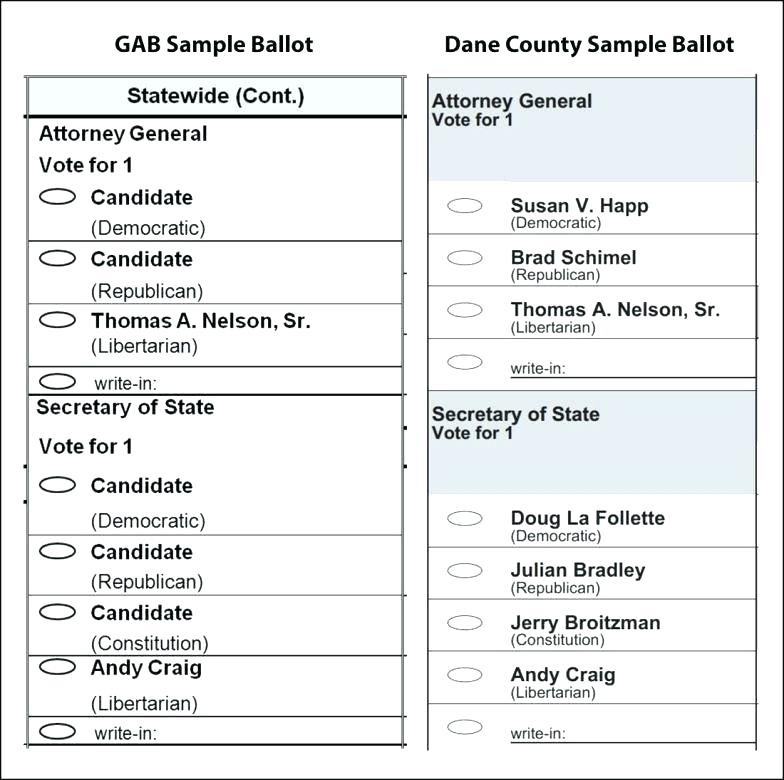
Voters Deserve Better:
Current Position:
The League of Women Voters supports only voting systems that are secure, accurate, re-countable, accessible and transparent. We support replacing our current voting computers with a new technology of hand-marked paper ballots, which will be:
- The ballot is marked by the voter (may be assisted by a marking device)
- The voter casts the ballot by feeding the ballot into an optical scanner at the precinct
- The scanner counts the vote and drops the ballots into a box, where they are retained for a recount or audit.
- The paper ballots are the official record of the election.
The new-generation paper ballots have the following advantages:
- Correction by the voter if the scanner rejects for bad marking. This is a precinct count fail-safe mechanism that does not exist with a central count.
- Long lines and broken machines should not be a problem with paper ballots. Additional voting stations can be added using additional tables and inexpensive cardboard privacy screens.
- Ranked Voting and Instant Runoff Voting become possible with paper ballots.
- Paper ballots can be recounted and/or audited.
- Vote reporting will be simpler and faster because the paper ballots are not complicated. By contrast, reporting the statewide vote for the iVotronic requires processing of approximately 12,500 memory chips and 2,200 PEBs.
- The best election is one that the people trust. The new generation of paper ballots inspires trust because people can verify and hold their ballots, deposit them in the ballot box (scanner) themselves, and know that the actual ballots can be recounted if necessary.
South Carolina's iVotronic computers have a troubled history:
- In 2007, an examination of the iVotronic computers by three security groups recommended against using them. Problems existed with both the design and coding.
- When we first looked at computer records of the vote in several SC counties, we found thousands of missing/miscounted/uncounted votes.
- The State Elections Commission adopted new procedures and wrote computer code (similar to our code) in order to improve the accuracy of the certified totals.
- Errors are still occurring in reporting the vote totals. Although the manufacturer has provided updates to the software, incorrect totals and anomalies are still occurring.
- Paper ballots and tabulating computers are the only obvious choices to replace the iVotronic computers.
Tabulating computers pose a number of problems:
- Tabulating computers, such as the ES&S ExpressVote, may be understood as an iVotronic computer with an attached printer. The iVotronic computers accumulate the total vote in electronic data files in their memories. Tabulating computers also accumulate the total vote in electronic data files in their memories.
- When using tabulating computers, the vote can be counted from the paper ballots or from the electronic data files. Since these two methods can result in different totals, the South Carolina Code of Laws must specify which method produces the official totals.
- Currently, the electronic data in the memories of the iVotronic computers are used to count and recount the vote, setting a precedent that will allow the tabulating computers to count and recount the vote. If so, the paper ballots will never be used for anything except taking up storage space.
- These electronic data are vulnerable to undetected coding errors, machine failure, and other types of computer problems.
- The electronic data is vulnerable to fraud, hacking and cyber-attack. The danger from cyber-attack, not the larger cost of the tabulating computers, may be the most important factor favoring the adoption of paper ballots.
- The ES&S ExpressVote tabulating computer uses barcodes on its ballots to count the vote. The text that the voter verifies, is not used to count the vote. Because the voter cannot verify his ballot, the ES&S ExpressVote is unacceptable.
- Tabulating computers are unacceptable if they can alter the ballot after the voter has verified it.
- The use of wireless communication, mobile telephone connection, optical scanners or the internet to transmit vote totals is unacceptable because they open pathways for cybercriminals to modify the vote totals.
Estimated cost of equipment (Statehouse Report, Nov. 26, 2018):
- Tabulators/Computers: Estimated $62.5+ million (12,500 tabulators x $5,000 each). In addition, expect at least $1 million annual fee, as in now paid by the counties.
- Paper ballots and one tabulating computer per precinct: Estimated $22 million ($5,000/tabulator X 2,200 precincts plus $5,000/scanner x 2,200precincts). In addition, expect an annual fee of $100 per tabulating computer.
- The requirement of one tabulator computer per precinct is to accommodate visually challenged voters.
- Expected lifetime of the new equipment must be considered.
Tabulators/computers are undesirable because they are expensive, not transparent, have been shown to result in incorrect counts, and constantly raise serious issues of computer security.
Paper ballots, on the other hand, produce a permanent official record that is inexpensive, easily understood by the voter, re-countable, difficult to hack, and trusted by voters.